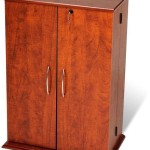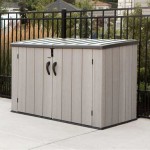The Best Storage Solution For Your Comic Book Collections
The world of comic book collecting is a vibrant and passionate one, filled with enthusiasts dedicated to preserving and showcasing their prized possessions. Whether a seasoned collector with thousands of books or a newcomer just dipping their toes in the water, finding the optimal storage solution is paramount. Proper storage not only protects comic books from physical damage but also helps maintain their value, preventing degradation from environmental factors. This article will explore various storage options and related considerations, aiming to provide a comprehensive guide to the best storage solutions available for comic book collections.
The primary goal of comic book storage is to protect the books from potential threats such as moisture, sunlight, pests, and physical damage. Each of these factors can significantly impact the condition of a comic book, leading to discoloration, brittleness, tears, and even mold growth. Selecting the correct storage methods and materials is crucial in mitigating these risks and ensuring the longevity of the collection.
Archival Supplies: The Foundation of Comic Book Preservation
When it comes to storing comic books, the selection of archival-quality supplies is non-negotiable. These materials are specifically designed to be acid-free and chemically inert, preventing them from reacting with the paper of the comic books and causing damage over time. The most commonly used archival supplies include backing boards, comic book bags, and storage boxes. Each of these components plays a critical role in safeguarding the collection.
Backing boards are rigid pieces typically made of acid-free cardboard or Mylar. They are inserted behind the comic book within the bag to provide support and prevent bending or folding. Opting for full-back boards, which cover the entire back of the comic, is generally recommended over half-back boards for enhanced protection. The thickness of the backing board can also vary, and a heavier board provides greater support, especially for older or more valuable comics.
Comic book bags are clear plastic sleeves designed to encase the comic and protect it from dust, dirt, fingerprints, and minor tears. There are two primary types of bag materials: polypropylene and Mylar. Polypropylene bags are the more affordable option and offer decent protection. However, Mylar bags are considered the superior choice for long-term archival storage. Mylar is a chemically stable polyester film that is resistant to tearing, punctures, and moisture. While more expensive than polypropylene, Mylar bags provide a higher level of protection and are recommended for valuable or sentimental comics.
Storage boxes are the final layer of protection, providing a safe and organized environment for storing bagged and boarded comic books. Comic book storage boxes are typically made of corrugated cardboard and come in various sizes to accommodate different collection sizes. It is essential to choose boxes that are specifically designed for comic books, as they are sized to fit the books snugly without causing undue pressure. When selecting storage boxes, ensure that they are acid-free to prevent any potential damage to the comic books. Additionally, consider the weight capacity of the boxes to avoid overloading them, which can lead to structural weakness and potential damage to the contents.
Environmental Control: Managing Temperature, Humidity, and Light
Beyond the selection of archival supplies, creating a stable and controlled environment is critical for the long-term preservation of comic books. Temperature, humidity, and light exposure are all significant factors that can affect the condition of the collection. Fluctuations in these environmental conditions can accelerate the degradation process, leading to irreversible damage.
Temperature is a critical factor to consider. Comic books should ideally be stored in a cool and stable environment, with a temperature range between 65°F and 75°F (18°C and 24°C). High temperatures can cause the paper to become brittle and accelerate the aging process. Avoid storing comic books in areas prone to extreme temperature fluctuations, such as attics, basements, or garages. These locations are often subject to significant temperature swings and are more likely to have humidity problems.
Humidity is another crucial factor to manage. The ideal humidity level for comic book storage is between 50% and 60%. High humidity can promote the growth of mold and mildew, which can irreparably damage the paper. Conversely, low humidity can cause the paper to become dry and brittle. A dehumidifier or humidifier can be used to maintain the appropriate humidity levels in the storage area. Regularly monitoring the humidity with a hygrometer is also recommended to ensure that the levels remain within the optimal range.
Light exposure, particularly ultraviolet (UV) light, can cause significant fading and discoloration of comic book covers and pages. Direct sunlight should be avoided at all costs. Store comic books in a dark or dimly lit area, away from windows or other sources of natural light. If displaying comic books, use UV-resistant display cases or covers to minimize the damaging effects of light exposure. Fluorescent lighting can also emit UV radiation, so it is advisable to use LED lighting, which produces minimal UV emissions.
Organization and Accessibility: Keeping Track of the Collection
While proper storage is essential for preserving comic books, organization and accessibility are also important considerations. A well-organized collection is easier to manage, allowing for quick retrieval of specific issues and facilitating inventory management. There are several strategies that can be employed to organize a comic book collection effectively.
One common method is to organize the collection alphabetically by title. This approach makes it easy to locate specific series or characters. Within each title, the books can be arranged numerically by issue number. This ensures that the collection is in chronological order, making it easier to follow the story arc. Alternatively, comic books can be organized by publisher, such as Marvel, DC, or Image. This can be a useful approach for collectors who focus on specific publishers or imprints.
Another organizational strategy is to group comic books by genre or theme. For example, a collector might choose to group all of their superhero comics together, or separate their horror comics from their science fiction comics. This approach can be useful for collectors who enjoy browsing their collection by genre or theme. When organizing the collection, it is important to label the storage boxes clearly and consistently. This will make it easier to identify the contents of each box without having to unpack them. Labels can be handwritten or printed, and should include the title, issue numbers, and any other relevant information.
Maintaining an inventory of the comic book collection is also highly recommended. This can be done using a spreadsheet, database, or a dedicated comic book inventory software. The inventory should include details such as the title, issue number, publication date, grade, and any other relevant information. An inventory can be invaluable for tracking the value of the collection, identifying missing issues, and ensuring that the collection is properly insured. Furthermore, the inventory can be used to generate reports, such as a list of all comic books published in a particular year or a list of all comic books featuring a specific character.
Accessibility is another important consideration. The storage location should be easily accessible, allowing for convenient retrieval of comic books. Avoid storing comic books in hard-to-reach places, such as high shelves or cramped corners. The storage area should also be well-lit to facilitate browsing and inventory management. Creating a dedicated space for the comic book collection, such as a spare room or a well-organized closet, can greatly enhance the accessibility and enjoyment of the collection. The organizational methods discussed above are intended to provide you with a place to start. Your organization should reflect the needs of how you manage your collection and how you collect. With a well-organized collection, any single comic can be retrieved and enjoyed with easy.

Comic Book Storage Ideas Fan Tips Solutions Examples

Comic Book Storage Ideas Fan Tips Solutions Examples

Comic Book Storage Ideas Fan Tips Solutions Examples

No White Boxes 10 Best Ways To Your Comic Collection

No White Boxes 10 Best Ways To Your Comic Collection

Comic Book Storage Ideas Fan Tips Solutions Examples

Developing Organizing Comics Manga Graphic Novel Collections Pt 1 Don T Shush Me

No White Boxes 10 Best Ways To Your Comic Collection

Comic Book Supplies The Ultimate Guide For And Gear

No White Boxes 10 Best Ways To Your Comic Collection
Related Posts








